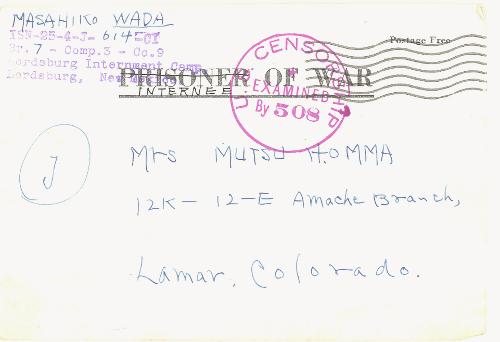
Hospital
The War Relocation Authority (WRA) built a hospital in Amache with 150 patient beds. It included a dental clinic, surgery unit, X-ray unit, pharmacy, optometry, and sanitation facility. The hospital was staffed with both WRA and inmate personnel. Dedicated inmate staff doctors received only nineteen dollars a month (less than a dollar a day) while WRA personnel received wages comparable to doctors in practice outside of the camp. The discrepancy in wages was a constant source of irritation and resentment among the inmates. Noting the discrepancy and fearing the loss of medical staff who were conversant in both English and Japanese, the inmate population collected funds to help subsidize the wages of the inmate medical personnel who could have relocated to the outside and earned considerably higher wages.
In general, it can be stated that the medical services provided at Amache were excellent considering the limitations of equipment and supplies provided. There were 412 births and 106 deaths at Amache during its three years of existence.
Dental Clinic
The dental clinic, staffed by evacuee dentists, treated about 125 patients daily. However, due to the shortage of critical materials, service was initially limited to emergency cases. Army officer Lawrence Scroggs Singleton, a USC dental school graduate, helped arrange for several Japanese dentist to bring their dental equipment to Amache.

Police
The Amache Police Department was headed by a Caucasian security officer and modeled on an urban police force with an internee chief, a dozen captains and sergeants, and forty-eight patrolmen who worked eight-hour shifts. The Military Police who guarded the camp perimeter were not responsible for internal law enforcement.
Fire Department
The Amache Fire Department was equipped with two up-to-date Ford pump trucks. Three crews of eight to ten firefighters worked rotating eight-hour shifts under the management of Caucasian supervisors and an internee fire chief. Each block also had volunteer auxiliary firefighters.
Post Office
The Granada Relocation Center initially shared a name with the nearby town of Granada, but the local post office could not handle the amount of mail being sent to the camp, so the facility needed a post office with a name of its own. The Amache Post Office occupied a structure 100 ft x 40 ft located between the administration building and the fire station. The Amache Post Office, a regular branch of the Lamar Post Office, handled 3,000 to 3,500 letters, and 400-500 packages each month.
Six inmates delivered the letters and packages to the block offices every afternoon, at the same time collecting the outgoing mail from a mail box. The block managers were responsible for the distribution of mail to their respective blocks.
